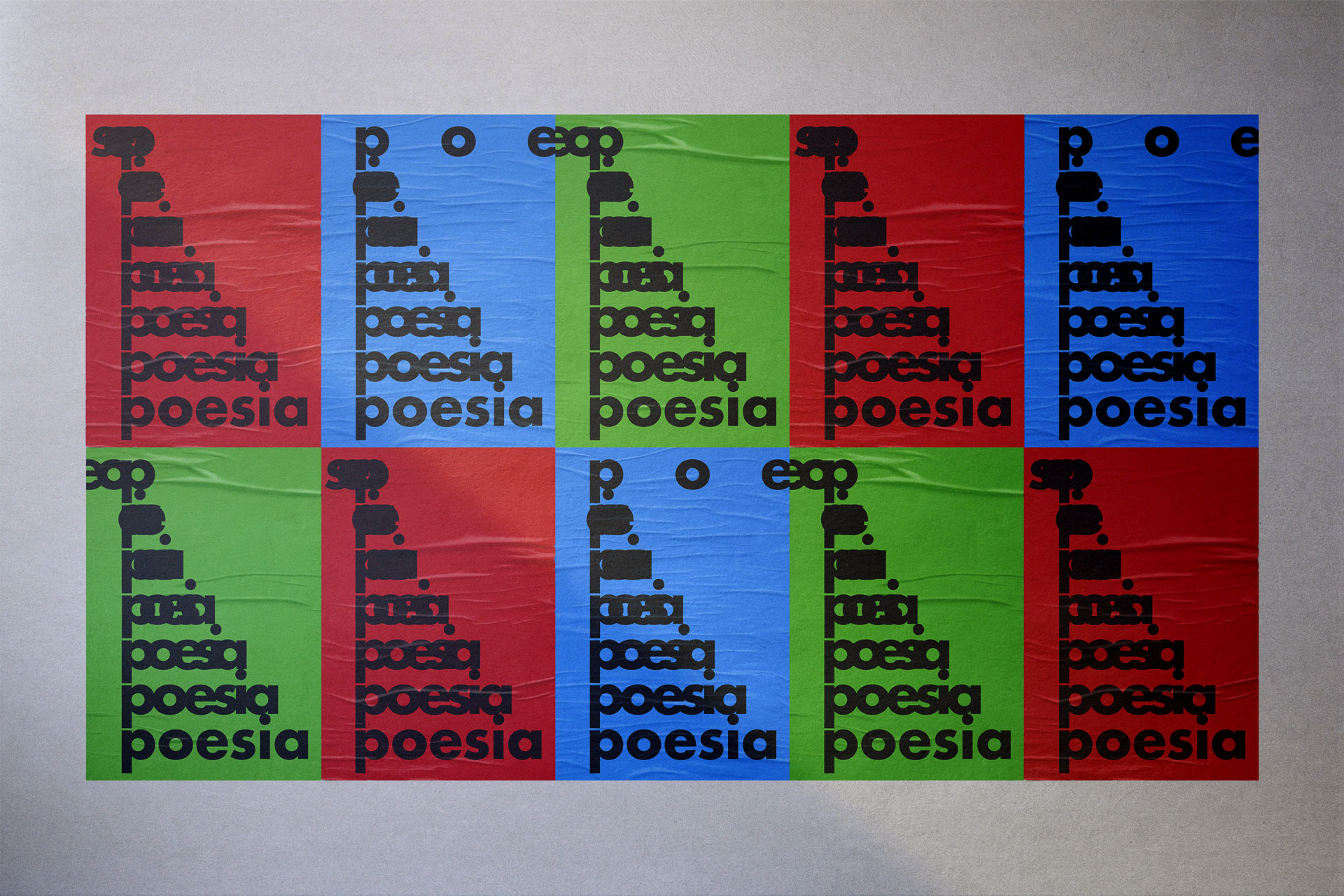

Visual poetry has always been more than a bridge between word and image. Its lineage is undoubtedly concretist, because it has its eye on the universe of the driest signs, and it is as lean as Concreta, when it glues together forms and meanings. Even within the lineage, the biggest difference is the mixture. From the outset, Visual Poetry guaranteed free transit through visual, verbal and sound codes and included mixtures of all kinds, in terms of media and supports. Nowadays I think it also includes performative actions, environments and even architecture, because its territory remains healthy and multidisciplinary, with increasingly fluid boundaries. It is certainly a terrain that is averse to specialists in traditional image techniques and poets of verse alone: to inhabit it was, first and foremost, to assume the hybridity of languages. From the outset, I myself visited this territory constantly in order to establish my repertoire in its more open limits.

In Brazil in the 1970s, Visual Poetry was quite marginal and published mainly in magazines produced and managed by the authors themselves, which were then distributed and exchanged, almost hand-to-hand. The editions were necessarily small, due to the cost and difficulties of dissemination, but also because the copies were destined for peers, and there weren’t that many of them. Julio Plaza thought that 600 copies should be the maximum limit for these magazines and also for similar publications, because that was exactly the size of the interested public in those years of borders hardened by the military dictatorship. But then we became convinced that they could also function as “windows”, whose international exchange material was received and disseminated by archives and distributors organized by artists and authors in other countries: Visual Poetry could go out into the world, the “global” world, before the digital networks that now facilitate – but also pasteurize – our communication.

If at that time Visual Poetry promoted its own presentations and was totally averse to galleries, only called upon by rare institutions and museums (with honorable exceptions such as, in Brazil, the MAC in Walter Zanini’s time, Franklin Furnace in NY and Other Books and So in Amsterdam), what is it doing now exhibited in an art gallery? What has changed?

Everything has changed – except badly. Art has changed, but much more than that, galleries have changed, museums have changed and so has recognition. For some time now, institutions, especially foreign ones, have begun to recognize that the art scene, from the 1970s to the present, would not be sufficiently explained without this poetic and multimedia aspect, which had previously been more underground. And that it was really necessary to create new ways of archiving, collecting, showing and celebrating this previously overlooked part of recent history, not least because it stitches together or anchors various forms of the poetics of the present. In the wake of the veritable sweep promoted internationally by museums and collectors to understand and promote the background of these manifestations and their current derivations, why wouldn’t some galleries, among the most attentive, be situated in this same constellation of intentions?
Regina Silveira – February 2012

Contributors
André Vallias • Arnaldo Antunes • Augusto de Campos • Décio Pignatari • Gastão Debreix • Gil Jorge • João Bandeira • Júlio Mendonça • Julio Plaza • Lenora de Barros • Omar Khouri • Paulo Miranda • Ronaldo Azeredo • Sonia Fontanezi • Tadeu Jungle • Villari Herrmann • Walter Silveira • Zéluiz Valero

This exhibition was conceived with a view to the vein of Brazilian poetic production that establishes close relations with the codes of visuality and others, and therefore brings together poets who operate from the verbal, dialoguing intensely with various languages. The works, some already established and many still unpublished, have now entered the gallery sphere, which is a rare occurrence among us. From the single object to the series, Poetry is presented in the manner of Fine Arts works, since they place great value on visuality – from writing to color and other graphic devices. Poetry, always.
Omar Khouri and Paulo Miranda – curators
Exhibition at Galeria Virgilio – SP
April 11 to May 5, 2012
Rua Dr. Virgilio de Carvalho Pinto, 426
São Paulo – SP
Brazil
